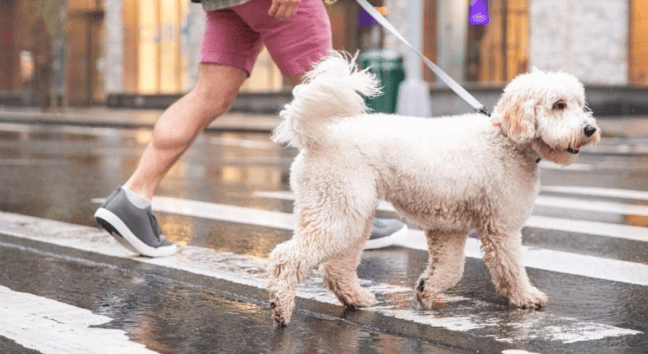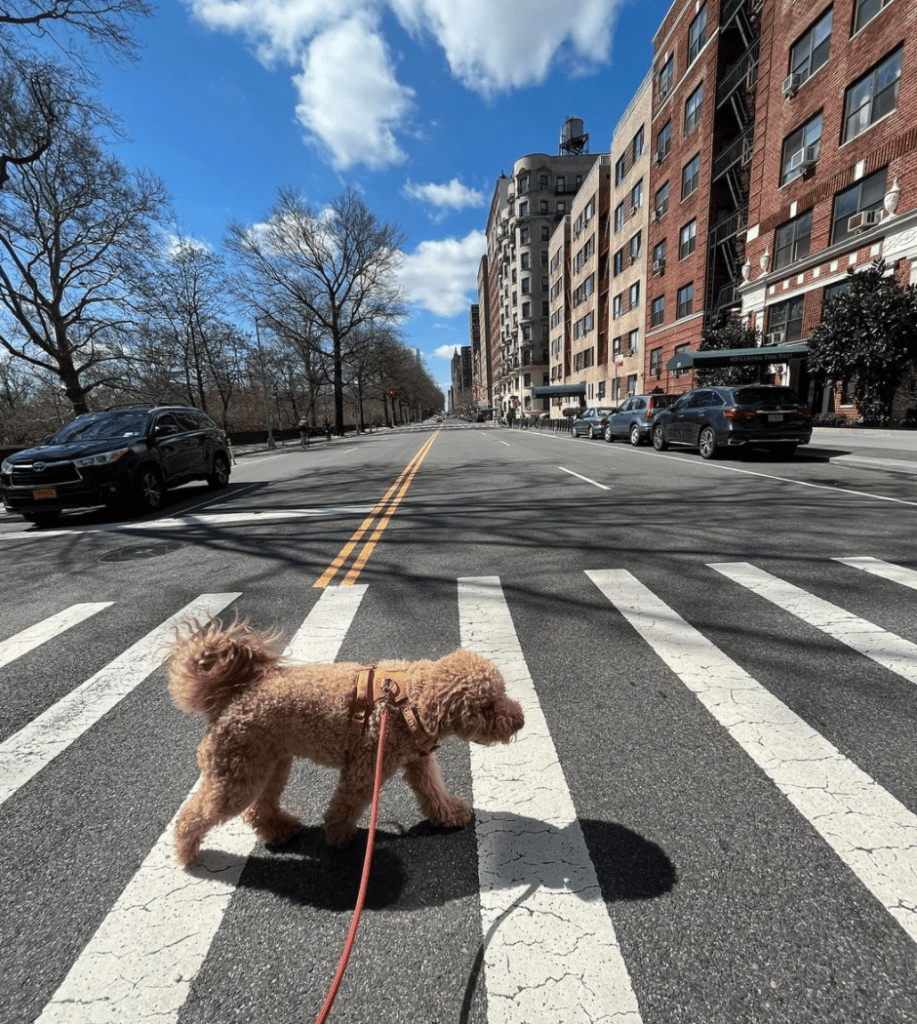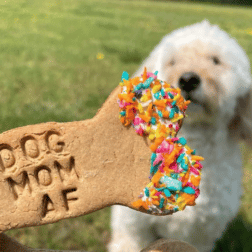When living in a busy urban environment like NYC, it’s important that we are versed in all things dog before adding a member to our family! We talked to Tess Marty, a NYC dog trainer, and she’s going to be giving us 5 tips for any NYC dog.
What we’ll cover:
- Strategies to best walk with your dog in NYC
- Greeting Etiquette
- Desensitizing Tricks (sounds, construction, yelling, etc)
- Plan ahead and map out your best (and varied) walking routes
- Discover dog friendly spots to help with socialization and patience in busy settings
1. How to best walk with your dog on a leash in NYC
One thing that’s great for all dogs, but crucial for city dogs, is knowing how to walk on leash.
Not only “not pulling,” but other manners too, like greeting other people and dogs (see tip 2!), avoiding grates (don’t want those little toe beans getting hurt!), maneuvering in a crowd, leaving all those chicken bones (who is eating all this chicken!?), waiting to cross the street, and more!
You want to have some good verbal commands under your belt like “let’s go,” “leave it,” “wait,” and “this way,” which are my go-tos! There are so many bikes, cars, people, garbage, dogs and other stimuli on the streets, so you want to make sure you have the ability to practice in a quiet area (even your building hallway can be great!) to work these verbal commands so your dog can follow them outside as well.
Think of it like this: If you’re practicing leash walking with a hundred things going on around you, it’s like bringing a toddler to Disney for the first time and sitting them down and asking them to do a math problem. It’s not happening…at least not well, or quickly. If you let that same toddler practice the math problems first, then bring them to Disney after they’ve been on some rides, they’re likely to be able to solve that problem quicker! (I’m a dog person…I’m not sure how old kids are when they start learning math!). Practice makes perfect, and once your dog learns proper leash behavior, you’ll find yourself strutting the streets stress-free!
2. Learn to greet, (or not greet, people and dogs appropriately)

Listen, we all love a happy dog, but the old lady walking down the street with groceries and a walking cane isn’t going to be so happy with your pup jumping all over her. Not only is it impolite, it’s dangerous! We don’t want anyone getting hurt.
Greeting people and dogs by giving cues like “go say hello,” can be a life saver, because when your dog hears this every time they are allowed to say hi, they will learn to look to you to ask permission as to whether or not this person or dog is okay to approach.
While learning, it’s important to advocate for your dog to others. Let people know “my dog is in training, can you ask them to sit before petting please?” or “sorry, we’re in training and we are learning how to ignore other dogs.” It’s not rude. It’s not mean. It’s training! Our dogs aren’t public property, and it’s totally okay to not want people or dogs approaching. If your dog does jump or lunge towards others, work on your leash walking cues like “leave it,” and “let’s go” to remind them that they have to wait for your okay to say hello. This keeps our dogs safe from unwanted situations or potentially reactive dogs!
“Go say hello” has got to be my favorite city command to teach. It not only helps overenthusiastic dogs, but it gives confidence to the more reserved pups (who have a special place in my heart), because they know that you are telling them who is safe and who to not worry about, because they’re not saying hi to them.
3. Let’s Desensitize!
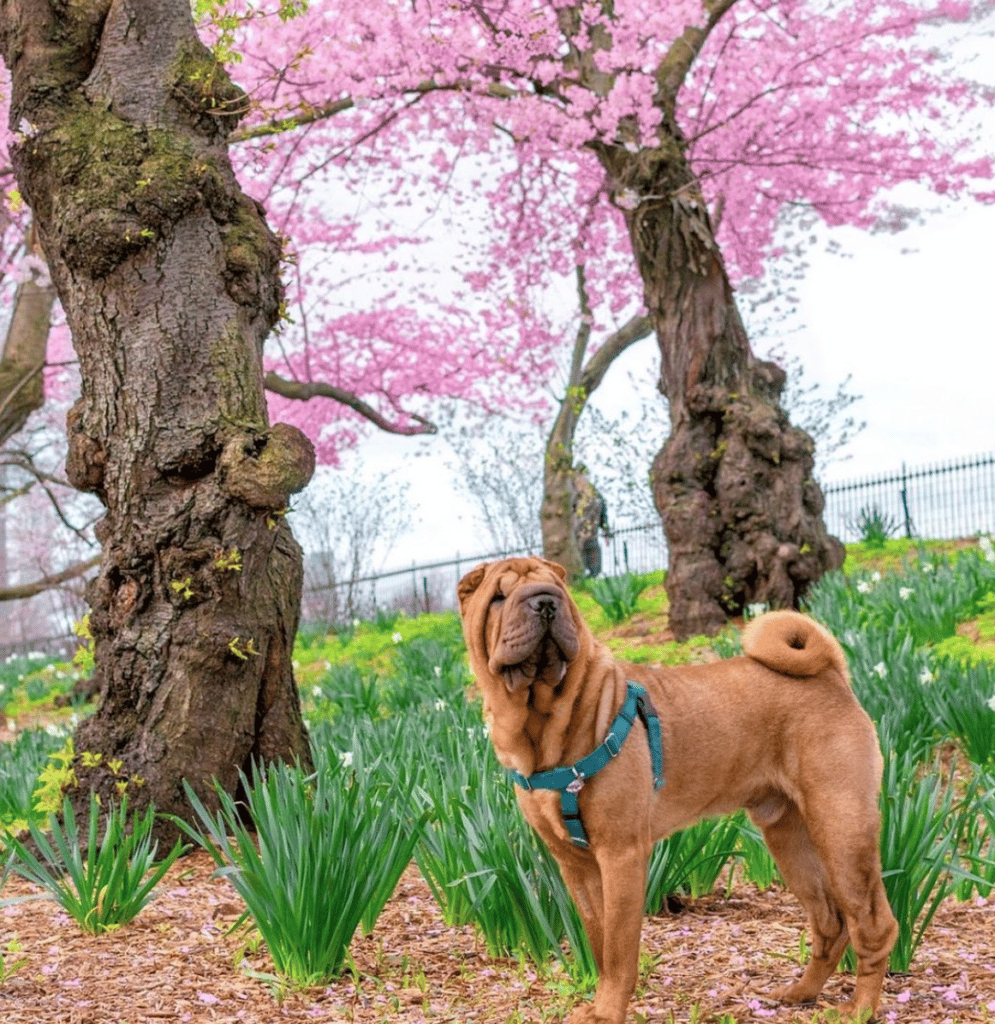
When we get a puppy, everyone talks about socializing. That is super important, obviously, but that includes desensitizing!
Desensitizing is introducing your dog to a potentially undesirable stimuli at low enough levels that the dog does not have a negative response, and gradually increasing the intensity. Some main stimuli I like to tell my clients to work with are: construction, fireworks, garbage trucks and street sweepers, busses, subways, people yelling, dogs barking, KIDS(!), doorbells and delivery people, people with bags or hats or carts, etc.
Tips on how to desensitize: Play sounds online and increase the volume, introduce your dog from far away, and practice in small doses. Spend five minutes outside with high-value rewards to not overdo it. Make sure you time it right, and stop if your dog is over their threshold.
Other desensitizing includes grooming tools, nail clippers, toothbrushes, and booties. You’ll want to make sure your dog is comfortable with their paws being touched if you’re going to wear booties on the hot concrete in the summer or salty streets in the snow, or even if you’re going to be wiping their paws when they come inside (the streets can carry a lot of bacteria on them!) or if you’re putting paw balm on to keep their paw pads safe. Work on touching the paws without any tools in your hand, focusing on touching the nails and not using force to hold them. Go slow with this!
4. Map out your routes for ultimate stimulation!

When I do training walks with my clients, I vary my route every day. I have mapped out a few different types of routes, including but not limited to:
- Longer walks to physically exercise them
- Shorter “sniffy walks,” for mental stimulation. Fun fact! 15 minutes of sniffing around is the equivalent of an hour-long walk for brain activity for a dog! Their sense of smell is so strong that it can tire them out learning about the environment around them.
- Shady walks for warmer days
- Scenic walks with more commotion (hello, Times Square!)
- And several different varied 1.5 mile walks. Sometimes we go up an avenue, sometimes we zigzag up and down streets, sometimes we take one street down several avenues! Here’s a map of a few different routes I have in Hudson Yards, where I do the majority of my training and walking, for reference!

Switching up your route is so helpful for keeping your dog’s mind active and for them to experience everything the city has to offer!
5. Find dog-friendly spots that allow you to practice being in public and to elevate your dogs socializing skills!
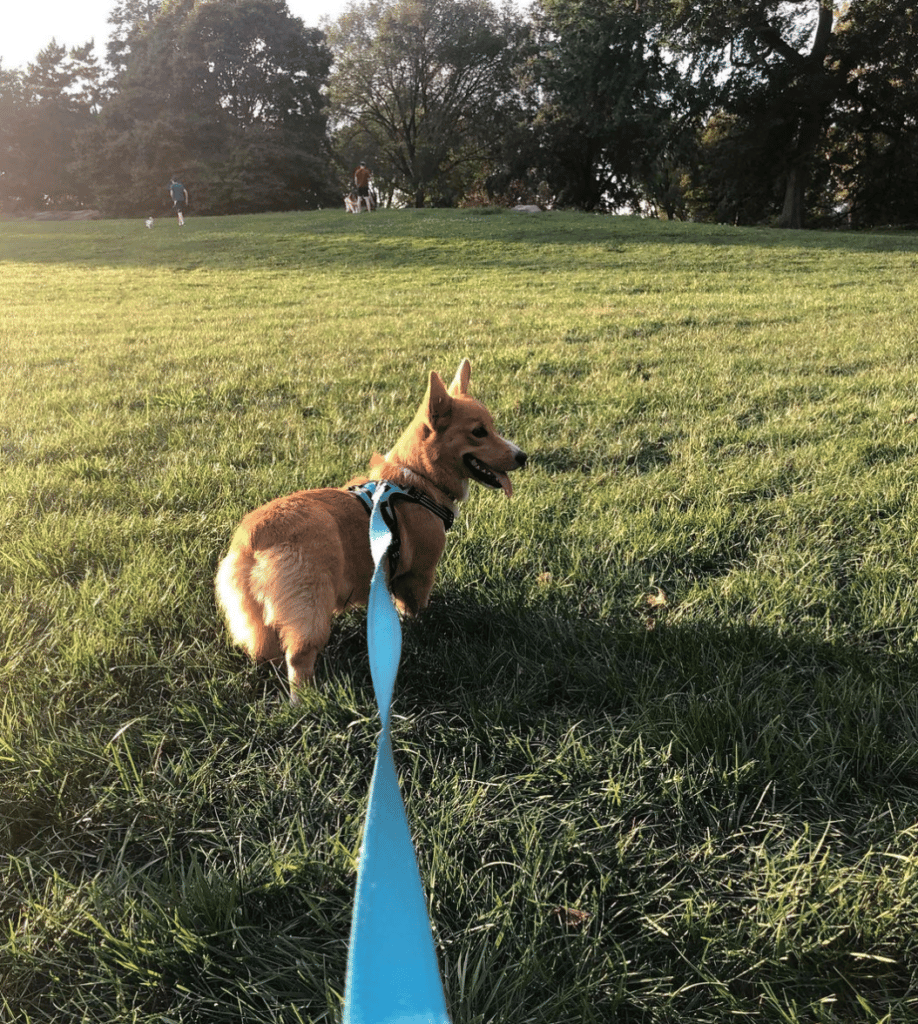
We all want to bring our dogs everywhere with us, but that’s not always possible. Make sure your dog knows how to be alone, too! However, it’s always fun to grab a drink with our dog parent pals (don’t have any? Try UpDog Dates, where you can meet other dog parents to be friends with…or to date!). Finding a good dog-friendly spot is great for practicing “settle,” not begging, patience, and independence…i.e not needing you constantly reassuring them in a public place. You can find plenty of dog-friendly atmospheres on Dog Spotted!
Pick a night to practice training specifically. You may not enjoy your experience the first time with them, so make the first few trips about them. Bring a chew or a filled kong for them, and get a drink or an appetizer to practice bring around the food. Take your time and have fun, and remember the more you practice the more dog-friendly places you can go!
Of course, these tips can be used for dogs in all settings, but we all know NYC is a whole different ballgame when navigating life with your pup. Stay safe, and happy training!

